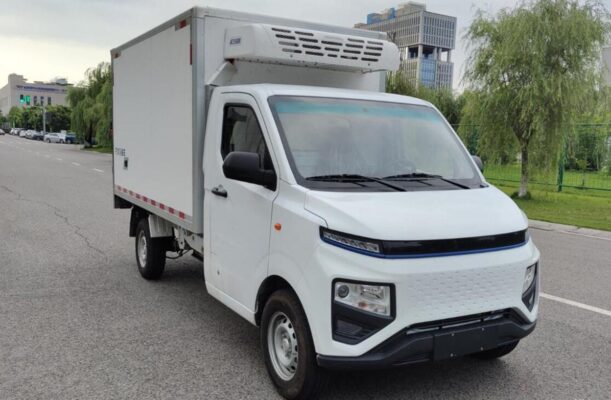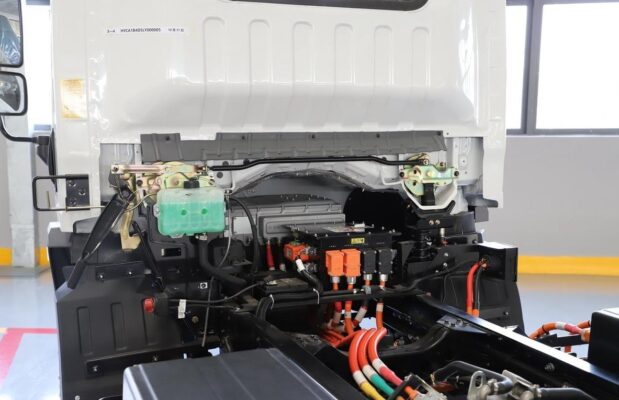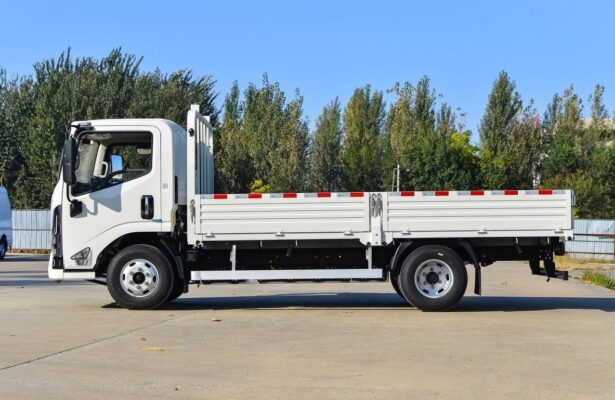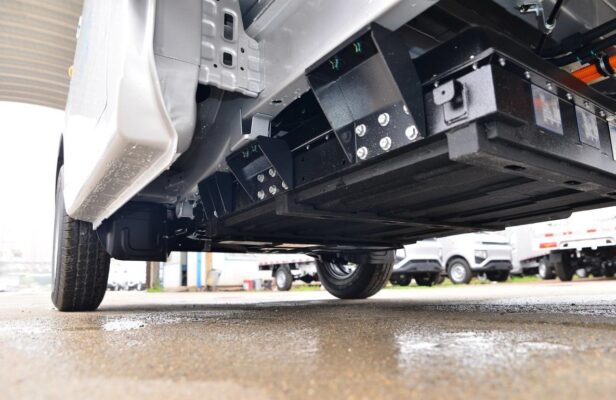Electric Truck Knowledge
What to do when encountering a long downhill slope?
Posted on by Electric Trucks
If you were to ask veteran truck drivers about the road conditions they dread the most, long downhill slopes would undoubtedly be among them. Long downhill stretches are often high-risk sections prone to truck accidents. To control the speed on such slopes, the duration and frequency of brake usage increase, which subsequently leads to a series of critical problems. So, what specific considerations should be taken when traversing a continuous, long, and steep downhill slope? How can one ensure driving safety?

▎ Regular vehicle inspections and additional checks before going downhill
Vehicles are in operation for extended periods, and it’s inevitable that they might develop “suboptimal conditions”. Thus, during daily operations, it is essential to conduct regular vehicle inspections, with a particular focus on various safety-related components and configurations. This includes checking whether the brake clearance is within the normal range; whether the brake pads are excessively worn; whether the air gauge is leak-free; whether the brake drum is free from cracks; whether the brake return spring functions properly; and whether the drying tank is operating normally. In the event of any identified issues, prompt repairs or replacements should be carried out.
In the current transportation market, especially in the mountainous regions of the south, the installation of water spraying devices is often required for vehicles. While this may be suspected of being an illegal modification, considering transportation safety, many sections preceding long downhill slopes will provide reminders to fill the water tank and inspect the water spraying equipment. This is done to prevent situations such as brake failure due to high temperatures.
As the adage goes, “Caution is the parent of safety.” When approaching a long downhill section, one must not be negligent. Even if it’s a familiar road, a thorough inspection should be conducted before commencing the descent to ensure that all components are in proper working order.
For instance, a seemingly minor issue like a slightly worn brake pad might not pose an immediate problem on flat roads but could significantly compromise braking performance on a long downhill slope, increasing the risk of an accident. Regular inspections help detect such potential issues in advance and allow for timely corrective measures.

▎ Reduce speed in advance when going downhill and never coast in neutral gear
Learning defensive driving techniques is an essential lesson for any driver. When confronted with a long downhill section, regardless of whether the vehicle is equipped with auxiliary braking equipment or not, preparations should be made well in advance. One must remain vigilant at all times and pay close attention to roadside warning signs and the location of escape lanes. Among these, roadside warning signs might provide details about the upcoming road conditions, such as indicating “Long downhill ahead for xx kilometers”, and so forth.
Before embarking on a long downhill slope, it is advisable to downshift and slow down in advance. When driving in a lower gear, the engine’s traction resistance can exert a certain reverse restraint on the vehicle’s speed. Operating at a lower speed reduces the frequency of brake usage and mitigates the risk of brake heat attenuation. Downshifting in advance also helps avoid potential accidents that could arise from an inability to downshift successfully when an unexpected issue occurs and the vehicle speed is too high.
At the same time, it is strictly prohibited to coast in neutral gear. Many truck drivers mistakenly believe that “coasting in neutral gear saves more fuel”. In reality, this is a misconception. Coasting in neutral gear not only fails to save fuel but also introduces additional safety hazards. When the engine is idling, the air pump delivers a relatively smaller volume of air. During a long downhill descent where frequent braking is necessary, a greater volume of air is consumed. Long-distance coasting in neutral gear can result in insufficient air within the air storage tank, thereby increasing the risk of brake failure.
Let’s consider a scenario where a driver coasts in neutral gear down a long slope and suddenly needs to brake urgently. The lack of sufficient air pressure can lead to ineffective brakes, causing the vehicle to lose control and potentially resulting in a disastrous accident.

▎ Install auxiliary braking and choose hydraulic retarder when buying a vehicle
With the advancement of commercial vehicle technology, numerous heavy trucks now offer the option of auxiliary braking functions such as hydraulic retarder, engine braking, and exhaust braking. Engine braking is primarily suitable for use at lower speeds, but it’s important to note that it is prohibited on slippery roads. Conversely, the hydraulic retarder proves more effective when driving at higher speeds.
If one frequently navigates mountainous roads, it is recommended to opt for a combination of engine braking and a hydraulic retarder. This choice ensures that the braking safety requirements at both high and low speeds are met. If the vehicle is equipped with a hydraulic retarder, during daily driving, one can utilize its different braking gears for deceleration and braking. This not only reduces the frequency of applying the main brakes but also extends the lifespan of the brake pads.
There are also specific techniques when braking. It is not advisable to continuously depress the brakes. Braking should be applied based on the changes in vehicle speed. If the vehicle speed is high, one can downshift the engine and decelerate with the assistance of auxiliary braking. Then, when applying the brakes, depress them until the speed reduces and then release. Braking should be intermittent. The aim is to minimize the frequency of brake applications and avoid continuous braking to prevent excessive heating of the brake drum.

● Postscript:
The freight transportation industry is inherently a high-risk sector. During daily operations, extra attention must be paid to safety. To summarize, conduct a comprehensive inspection before descending and operate correctly during the descent. In the event of an accident, handle the situation calmly to minimize potential losses. I sincerely hope that everyone can earn a livelihood safely.
By adhering to these safety guidelines and precautions, truck drivers can significantly enhance their safety and minimize the risks associated with traversing long downhill slopes. This not only protects their lives and livelihoods but also contributes to the overall safety and efficiency of the transportation industry.